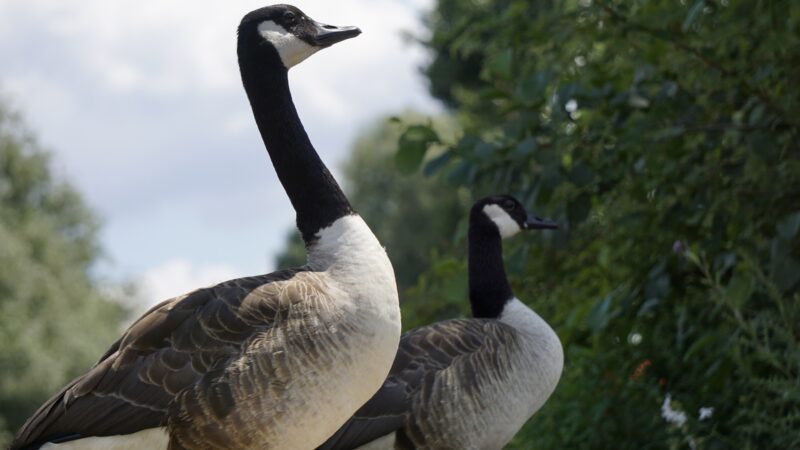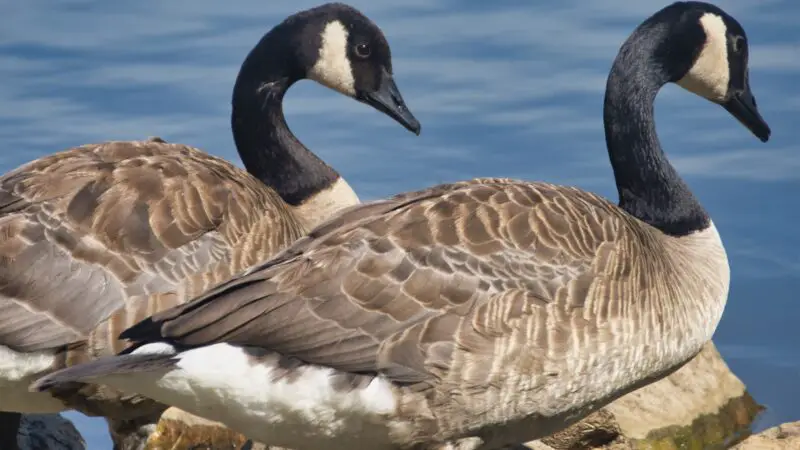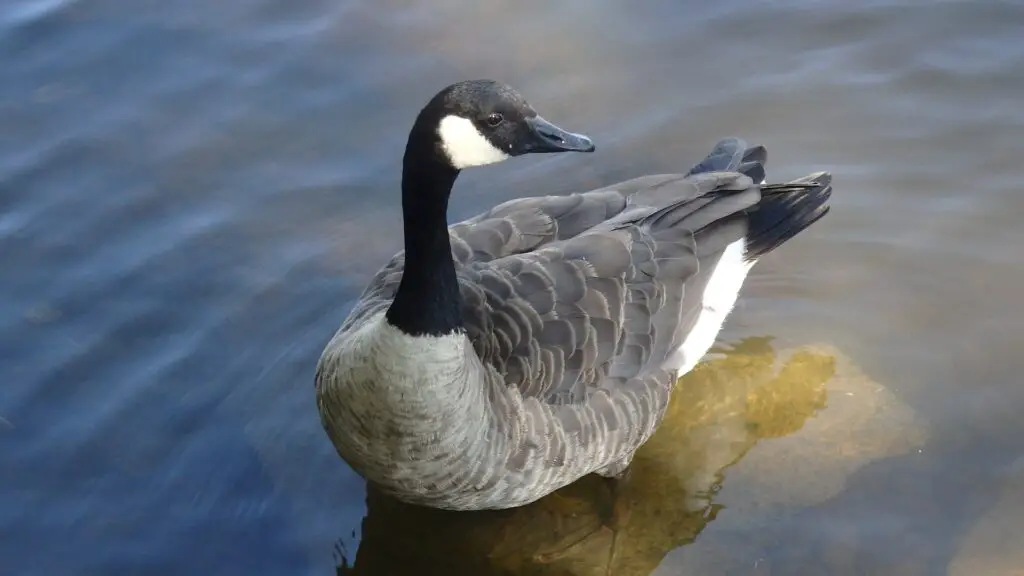What once were members of backyard farms and great sources of poultry meat, egg, and grease, most heritage breeds of geese are now rare. One such member, the Cotton Patch geese, is classified as critically endangered and must be bred by conservationist breeders to increase their populations.
Cotton Patch geese are small to medium-sized, sleek-looking birds that are characterized by having a wedge-like body profile and a white or dove-gray coloration. They are raised primarily for their meat and for weeding purposes, but they are also kept as pets.
To know more about Cotton Patch geese, their history, appearance, distinctive characteristics, egg-laying abilities, and other related information, read further this article!
Cotton Patch Goose History

Although the goose’s beginnings aren’t fully clear, it is believed that they have come from European stock breeds that were introduced to the US during colonial times. This is because the Cotton Patch geese share many common qualities with other European sex-linked goose breeds, such as the West of England, Shetland, and Normandy.
Cotton Patch geese were kept in homesteads and farms as multi-purpose poultry utilized for eggs, weeding, grease, meat, and their down feathers. They were particularly customarily kept in the Southern US and were especially abundant in corn and cotton fields where they perform weeding tasks, hence their name.
Right after the middle of the 20th century, herbicides came into popularity and nearly replaced goose weeding, leading to the decline of the Cotton Patch geese population. What once was a widely distributed breed, with as much as 300 to 400 geese per cotton field, the Cotton Patch goose is now rare and classified as critically endangered.
In 2020, the United States Postal Service announced a set of Forever Stamps that were dedicated to acknowledging the Cotton Patch goose along with other heritage breeds. The stamps were launched officially in May 2021. Although the goose breed had a quick rise in popularity in recent times, flocks remain small and spread throughout the US.
Are Cotton Patch Geese Endangered?
Cotton Patch geese are considered critically endangered by the Livestock Conservancy, the American Poultry Association, and the Society for the Preservation of Poultry Antiquities.
Cotton Patch Goose Identification

What Do Cotton Patch Geese Look Like?
A sleek-looking, small to medium-sized goose that resembles the Greylag in appearance. The Cotton Patch goose has an elongated and less rounded body compared to other breeds. It is upright and has a clean wedge-like profile due to its tail being in line with its wings and back. It has a minimal, single-lobed pouch when present.
The Cotton Patch has a rounded head, blue eyes, and a pink to orange dished beak and feet. All males are mostly, if not all, white with small amounts of dove gray in their feathering. Females, on the other hand, are mostly dove gray to brown in coloration with small amounts of white.
How Long Does a Cotton Patch Goose Live?
Cotton Patch geese have a life expectancy of 15 to 20 years. They can even live up to 30 years if well taken care of.
What Do Cotton Patch Geese Eat?
Cotton Patch geese are herbivores who eat grasses, roots, rhizomes of marsh plants, grain, and root crops. They may also occasionally eat small aquatic insects or fish.
How Big Do Cotton Patch Geese Grow?
There is currently no information regarding the size of Cotton Patch geese but since they are small to medium-sized geese, they may range from 30 to 50 inches in length.
Are Cotton Patch Geese a Heavy Breed?
Cotton Patch geese are a relatively heavy breed as geese (females) weigh 8 to 10 pounds. On the other hand, male geese weigh 9 to 12 pounds.
Cotton Patch Goose Wingspan
Cotton Patch geese wingspan ranges from 149 to 168 centimeters.
What Is Cotton Patch Goose Known For?
Cotton Patch geese are primarily raised for weeding and their meat. They are also kept as pets by breeders.
Where Do Cotton Patch Geese Originate?
Cotton Patch geese are not clear, but it is thought that they have come from European stock breeds as they likely share a common ancestry with other sex-linked European breeds.
What Are the Distinct Characteristics of a Cotton Patch Goose?
Cotton Patch geese are great fliers, being able to clear 5 to 6-foot fences without even a running headstart. Although this makes them sound flighty, it is a handy skill when it comes to escaping predators. They are also excellent foragers and can tolerate hot weather conditions compared to other goose breeds.
When Do Cotton Patch Geese Lay Eggs?
Cotton Patch geese usually start laying eggs in the late winter season, specifically sometime around February. By March to April, they would have finished laying their clutch.
How Old Is a Goose When It Starts Laying Eggs?
Young geese start laying eggs after they reach 9 months of age, however, they reach the age of maturity at 2 years old. Their reproductive performance will decline with age. As they reach their fourth year of production, they will lay the fewest eggs.
How Often Do Cotton Patch Geese Lay Eggs?
Like all other geese, the Cotton Patch lays 1 clutch per egg-laying season. After this, they will not lay any more eggs until the next season in the following year.
What Color Are Cotton Patch Goose Eggs?
Cotton Patch geese lay large white eggs.
Are Cotton Patch Goose Eggs Good to Eat?
Eggs of cotton patch geese are good to eat and they’re known to be tasty too!
Cotton Patch Geese Care Tips

Housing
Indoor housing should be a partially-enclosed shed and located on a high, well-draining area to prevent drafts from entering the house, water saturation on the floor, and dampness. Provide at least 1 square meter per bird. A 20-foot by 40-foot pen is sufficient, but you may adjust this size depending on the number of birds you have in your flock.
For outdoor housing, 2 square meters should be given to each goose. If possible, construct the outdoor housing near a source of water, preferably a pond or pool. They should also have enough soft green grass to roam around.
Safety and Protection
The geese should be confined with protective fencing. The fence’s wires should be buried along the border of the house at least 12 inches deep into the ground and should be toed outward at 6 inches. This will prevent predators from digger under the base of the fence. Cover using netting or mesh wire.
Remove areas where the geese can perch more than 4 feet above the floor such as nest box tops, window sills, and electric cords. Dispose of any loose or ragged wire and other sharp-edged objects. Whenever you’re not home, lock your pens and buildings to avoid theft.
Nutrition
For goslings, crumbled poult or chick starters should be provided to them for the first 7 to 10 days. After this period, they should be fed with a pelleted grower ration, along with oats, corn, milo, wheat, and other grain. As the geese age, they can be fed with commercial mixes.
Grass comprises most of their diet, which means they should be provided with well-kept pasture throughout their growing period. Ladino clover makes a fine pasture, but other types of white clovers and grass varieties such as bluegrass, bromegrass, orchardgrass, and timothy can also work. 1 acre should work for 20 to 40 birds.
A pasture rotation system should be observed as this reduces the risk of the geese contracting any parasites. Make sure you do not chemically treat the pasture before allowing the geese to forage.
Feeders and Water
This equipment should be placed conveniently in the birds’ pen. As such, feed and water should be readily available and accessible to the geese. Make sure the top lip of the feeders and waterers reach the birds’ back height to prevent wastage.
Health Management
Immunize your geese against known infectious (bacterial, parasitic, or viral) diseases by conducting routine health exams at your local veterinarian. Let them administer the appropriate vaccines or bacterins at the appropriate time. Maintain a clean pen to reduce the risk of your geese contracting any harmful microorganisms.
Breeding Cotton Patch Geese
- Mating and Breeding. The geese should be mated at least a month before their breeding season. Clean and fresh drinking water must always be accessible and available for the geese so that goslings are reared successfully.
- Brooder House. Although a special building is not necessary, the geese should still be provided with protection. A shed can work as long as it is well-lit and ventilated. Provide 1 to 1.5 square feet of floor space per bird, then cover the entire floor with 4 inches of ground corn cubs, shavings, peanut hulls, absorbent litter, sawdust, or peat moss.
- Brooding Temperatures. Observe your geese’s behavior—when the temperature becomes too cold for them, they tend to huddle together, but when it’s too hot, they stray away from the light source. A starting temperature of nearly 90°F should be alright. Reduce about 5°F to 10°F per week until 70°F is reached.
- Storing and Incubating Eggs. If the eggs become soiled, they should be cleaned first before storage using a detergent or sanitizer which is available at most commercial or even local farm supply stores. Store eggs at 55°F until they are ready for hatching. Avoid storing eggs for more than 10 days, as this decreases hatchability.
- Rearing Goslings. The goslings can be brooded by broody geese. Brooding can also be done with artificial heat in a brooder house using a 250-watt heat ray lamp. Both the young and the geese should be provided with a constant, clean, and fresh supply of drinking water.
Cotton Patch Geese Common Health Issues
Cotton Patch geese are susceptible to pressure sores and bone infections, especially when they are housed without a proper water source for swimming. Other common health problems are intestinal parasites, limb deformities, and trauma caused by predators.
Related Questions
Are Cotton Patch Geese Friendly?
Cotton patch geese are friendly, but there are some birds that are skittish and not friendly toward their owners. It depends on how well they are handled. Fortunately, they are not known to be aggressive.
Do Cotton Patch Geese Make Good Pets?
Cotton patch geese are good pets as long as they are well taken care of by their owners.
Do Cotton Patch Geese Fly?
Cotton patch geese can easily fly over 5 to 6 feet of fencing.
Are Cotton Patch Geese Cold Hardy?
There is currently no information regarding this. However, Cotton Patch geese are known to be very tolerant to heat.
Related: What Are Sebastopol Geese? | Are They Rare?
